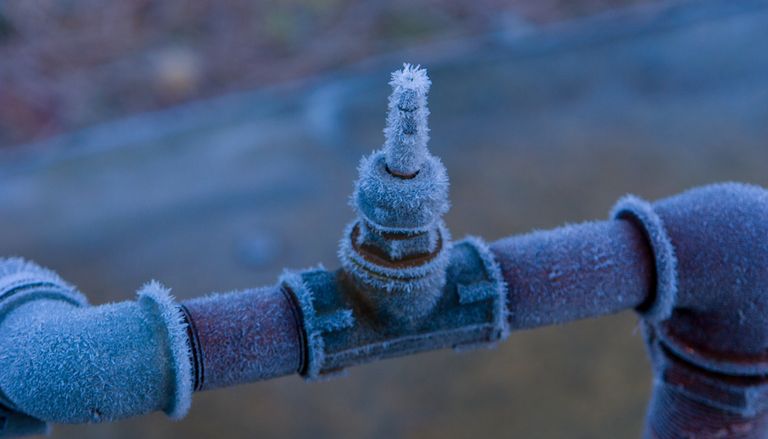Protect Against Frozen Pipes in Winter: Pro Strategies
Protect Against Frozen Pipes in Winter: Pro Strategies
Blog Article
We've discovered this article involving How To Avoid Freezing Pipes down the page on the web and decided it made sense to discuss it with you on my blog.

Winter can damage your plumbing, especially by freezing pipes. Here's just how to stop it from taking place and what to do if it does.
Introduction
As temperatures decline, the threat of frozen pipes rises, potentially resulting in costly repairs and water damages. Recognizing just how to prevent frozen pipelines is essential for property owners in chilly climates.
Understanding Icy Pipelines
What creates pipes to ice up?
Pipes freeze when revealed to temperatures listed below 32 ° F (0 ° C) for extended periods. As water inside the pipelines ices up, it expands, taxing the pipeline wall surfaces and potentially triggering them to rupture.
Threats and damages
Frozen pipes can cause water disruptions, residential property damages, and pricey fixings. Ruptured pipelines can flooding homes and create considerable architectural damages.
Indications of Frozen Water Lines
Determining frozen pipelines early can stop them from breaking.
Exactly how to identify frozen pipelines
Try to find decreased water circulation from taps, unusual smells or sounds from pipes, and noticeable frost on subjected pipelines.
Avoidance Tips
Insulating at risk pipes
Cover pipes in insulation sleeves or make use of warm tape to protect them from freezing temperature levels. Focus on pipes in unheated or external areas of the home.
Heating strategies
Keep indoor rooms adequately warmed, particularly locations with pipes. Open cupboard doors to permit warm air to flow around pipelines under sinks.
Securing Outdoor Plumbing
Yard tubes and outdoor taps
Separate and drain yard tubes before wintertime. Mount frost-proof spigots or cover outside faucets with protected caps.
What to Do If Your Pipelines Freeze
Immediate activities to take
If you think icy pipelines, maintain faucets open up to alleviate pressure as the ice melts. Utilize a hairdryer or towels soaked in hot water to thaw pipes gradually.
Long-Term Solutions
Architectural changes
Take into consideration rerouting pipelines away from outside wall surfaces or unheated areas. Add additional insulation to attics, cellars, and crawl spaces.
Updating insulation
Purchase high-grade insulation for pipelines, attics, and wall surfaces. Proper insulation aids preserve consistent temperatures and lowers the threat of frozen pipelines.
Final thought
Preventing icy pipes calls for positive measures and quick reactions. By recognizing the reasons, indicators, and preventive measures, house owners can protect their plumbing during cold weather.
5 Ways to Prevent Frozen Pipes
Drain Outdoor Faucets and Disconnect Hoses
First, close the shut-off valve that controls the flow of water in the pipe to your outdoor faucet. Then, head outside to disconnect and drain your hose and open the outdoor faucet to allow the water to completely drain out of the line. Turn off the faucet when done. Finally, head back to the shut-off valve and drain the remaining water inside the pipe into a bucket or container. Additionally, if you have a home irrigation system, you should consider hiring an expert to clear the system of water each year.
Insulate Pipes
One of the best and most cost-effective methods for preventing frozen water pipes is to wrap your pipes with insulation. This is especially important for areas in your home that aren’t exposed to heat, such as an attic. We suggest using foam sleeves, which can typically be found at your local hardware store.
Keep Heat Running at 65
Your pipes are located inside your walls, and the temperature there is much colder than the rest of the house. To prevent your pipes from freezing, The Insurance Information Institute suggests that you keep your home heated to at least 65 degrees, even when traveling. You may want to invest in smart devices that can keep an eye on the temperature in your home while you’re away.
Leave Water Dripping
Moving water — even a small trickle — can prevent ice from forming inside your pipes. When freezing temps are imminent, start a drip of water from all faucets that serve exposed pipes. Leaving a few faucets running will also help relieve pressure inside the pipes and help prevent a rupture if the water inside freezes.
Open Cupboard Doors
Warm your kitchen and bathroom pipes by opening cupboards and vanities. You should also leave your interior doors ajar to help warm air circulate evenly throughout your home.
:strip_icc()/snow-outdoor-faucet-pipes-4af65d1e5e904fb1aa7bf74071fe5d89.jpg)
As a passionate person who reads about How to prepare your home plumbing for winter weather, I assumed sharing that piece of content was a great idea. Remember to take a moment to promote this blog if you liked it. We enjoy reading our article about Helpful Tips to Prevent Frozen Pipes this Winter.
Visit My Site Report this page